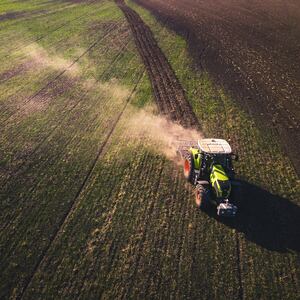Climate change is here to stay unless there’s a concerted global effort to stop it. But, as it turns out, not all efforts to calm Earth’s sizzling temperatures are created equal. Some might actually end up harming huge swaths of the world’s population in unanticipated ways.
In a new study published Wednesday in the journal Nature Communications, an international team of researchers found that while geoengineering—a catchall term for using new technologies and strategies to intentionally manipulate the planet’s environment—may cool the planet, these approaches run the risk of allowing the parasitic disease malaria to run amok and put a billion people around the world at risk of infection. It’s the first study of its kind to consider what would happen to public health if geoengineering is deployed at a large scale—and raises cautionary alarms for using emerging technology to solve the planet’s climate change woes.
Traditionally, there are two techniques that make up the core of geoengineering: removing carbon dioxide from the atmosphere so its role as a greenhouse gas is minimized; and solar radiation management (SRM), in which particles are injected into the sky to shield Earth from the sun and help the planet cool down. Carbon removal is seen as the more pragmatic and reasonable option, whereas SRM is speculative and may create more climate problems than it solves.
ADVERTISEMENT
There’s also the concern of what effects SRM could have on human health, particularly infectious diseases like malaria, which have largely been missing from the climate change conversation, Colin Carlson, an environmental scientist at Georgetown University Medical Center who led the new study, told The Daily Beast.
“The optimal temperature for malaria is 25 degrees [Celsius],” he said. “So if you were to do this sort of [geoengineering] indiscriminately to try to bring the temperature down without really thinking about doing it carefully, you basically might cool the tropics more than you meant to and more than the present day.”
Carlson and his team found that indeed appeared to be the case. They used computer modeling to simulate two future scenarios for Earth’s climate with either medium or high levels of global warming. Both scenarios were run under trials where SRM was implemented or not.
In the scenario where there was high global warming and SRM strategies were deployed, there were about a billion more people potentially at risk for malaria—likely because of these cushy lower temperatures the parasite prefers.
Strangely enough, the risk of the infectious disease (which is spread by infected mosquitoes) in these scenarios shifted between different regions. For instance, the simulations showed that SRM may substantially reduce the risk of malaria in the Indian subcontinent but in countries of Southeast Asia, the risk was increased. In computer models where there were medium levels of global warming but no SRM, increased malaria risk shuffled from West Africa to East Africa. But if you throw in SRM, this risk is reversed entirely.
“There are weird nuances layered on top of the biology,” Carlson said, explaining that malaria risk isn’t exactly one-to-one but contingent on various, enmeshed factors like how different types of malaria have varying optimum temperatures or the impact of population density in a region.
This doesn’t mean for sure a billion people will get malaria if we decide to move forward with geoengineering. What it does urge is a risk-benefit analysis—whether the health risks of an overheated planet trump a cooler planet that may allow infectious diseases to thrive.
“What we tried to do with the study [is show] there’s a systematic way we think about infectious disease and climate,” said Carlson. “We have the tools, we have the models, we have a method, and here’s what the process looks like. We have to do the math. If the math is in favor of geoengineering, then great. But we can’t just assume this solves the health impacts of climate change.”
If geoengineering methods like SRM are put into action, Carlson hopes we start making predictions and preparing now for any inevitable health crises, making sure the supply and allocation of life-saving treatments are available to regions plagued by malaria and other infectious diseases like dengue fever, Ebola virus, and even COVID-19.
“The core message here is that a world that is too hot for malaria is not a world we can live in. But a world with geoengineering is not the same as a world without climate change,” he said. “We know what our homework is on climate—we have to stop greenhouse gas emissions—but if we can fund scientific work and fund local health agencies to plan for some of these unusual scenarios, I think it will do a lot of good in the long run.”







